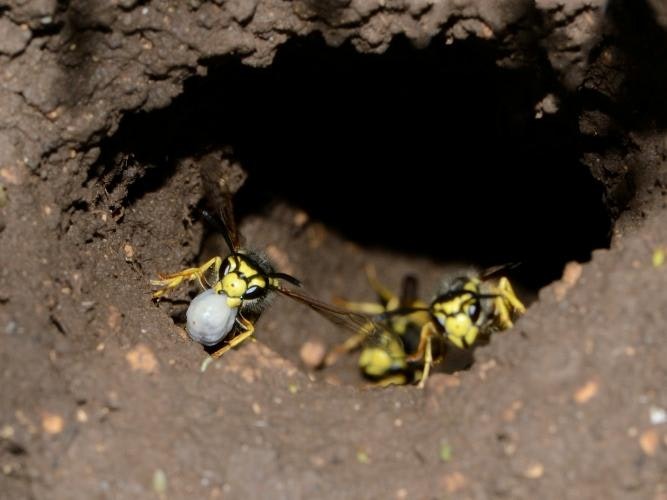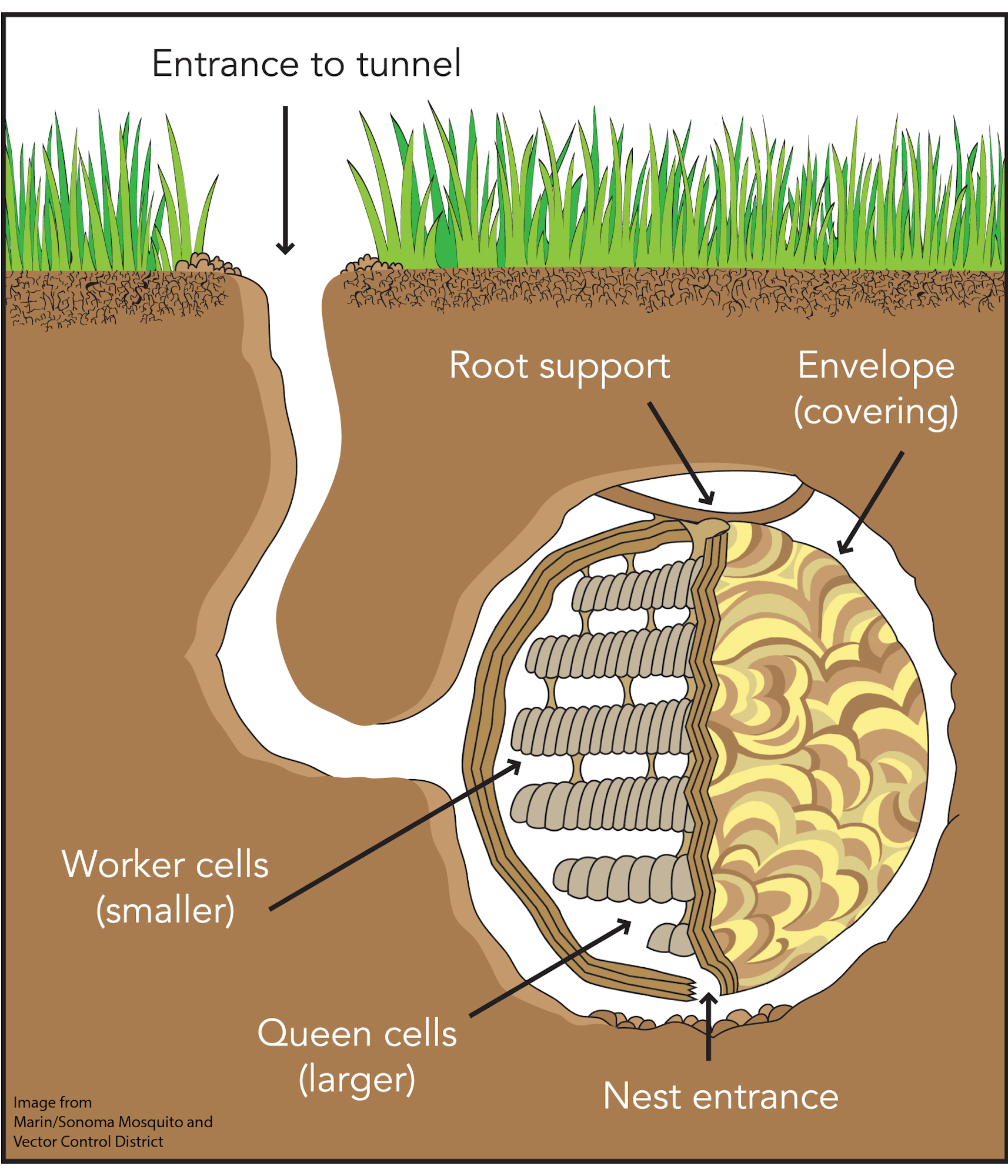Yellowjackets

Yellowjackets are stinging insects that build large communal hives.
Three kinds of yellowjackets occur in San Mateo County: the Western Yellowjacket (Vespula pensylvanica), Common Yellowjacket (Vespula alascensis) and the Aerial Yellowjacket (Dolichovespula arenaria).
Western Yellowjackets and Common Yellowjackets build hives under the ground and feed on live insects, dead animals, and nectar. These are the insects that pester you during your summer and fall BBQs - they are sometimes called "meat bees."
Aerial yellowjackets build large paper nests in trees or other high places (such as the eaves of your house). These nests are round or oval shaped and about the size of a basketball. Aerial yellowjackets feed exclusively on live insects.

Most of the time, yellowjackets are not aggressive and will not harm you if you stay out of their way. The yellowjackets that you see flying about in the garden are simply collecting food for their young and are helpful in controlling harmful insects in your garden. However, when their nest is disturbed, yellowjackets will swarm out and attack the offender. If you find a yellowjacket nest, be careful not to disturb it. If it is in a place you are likely to come into contact with, you can call the District to remove the nest.

